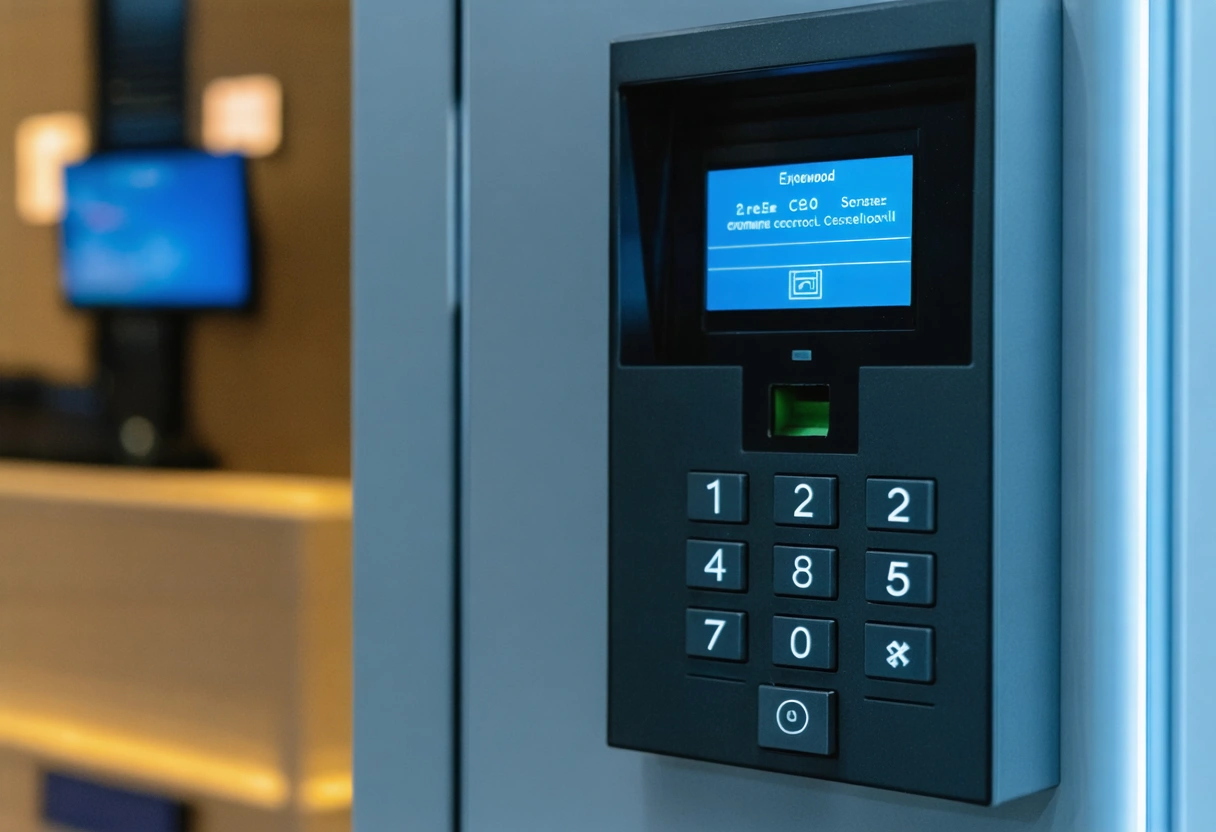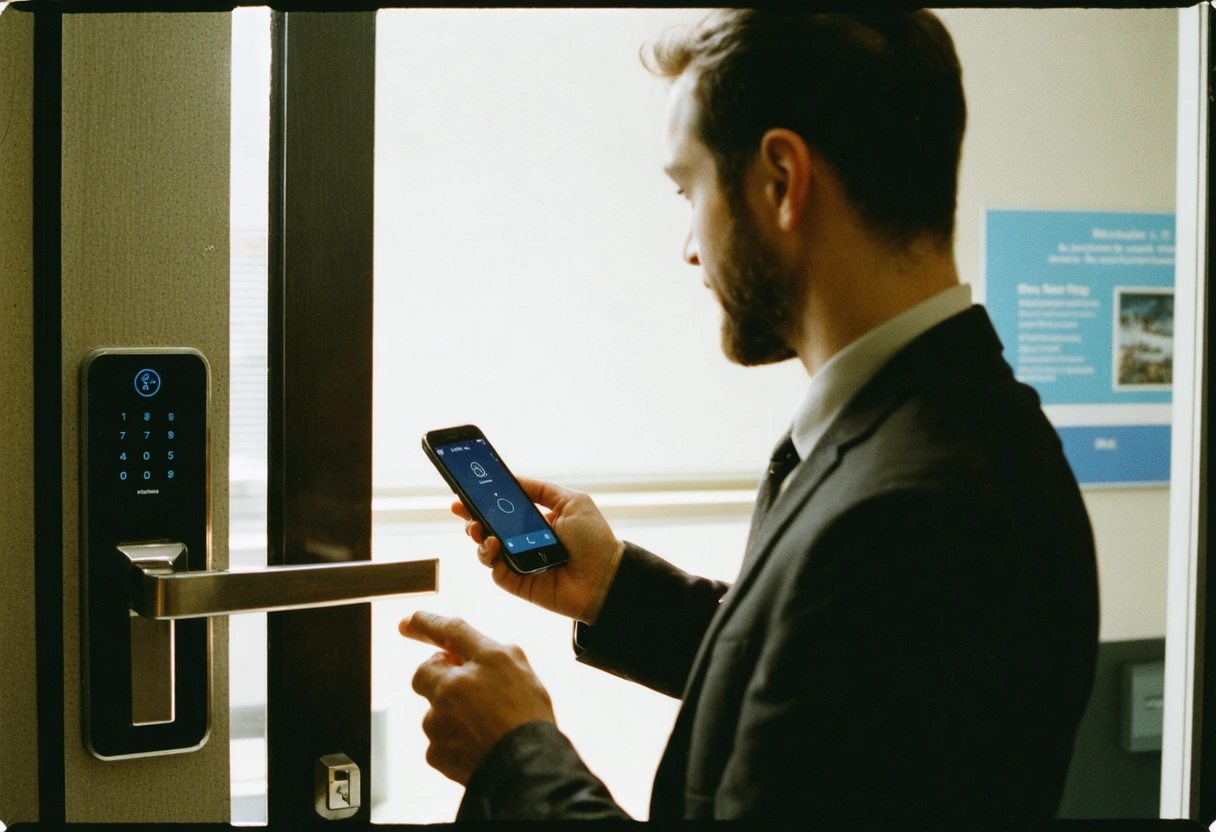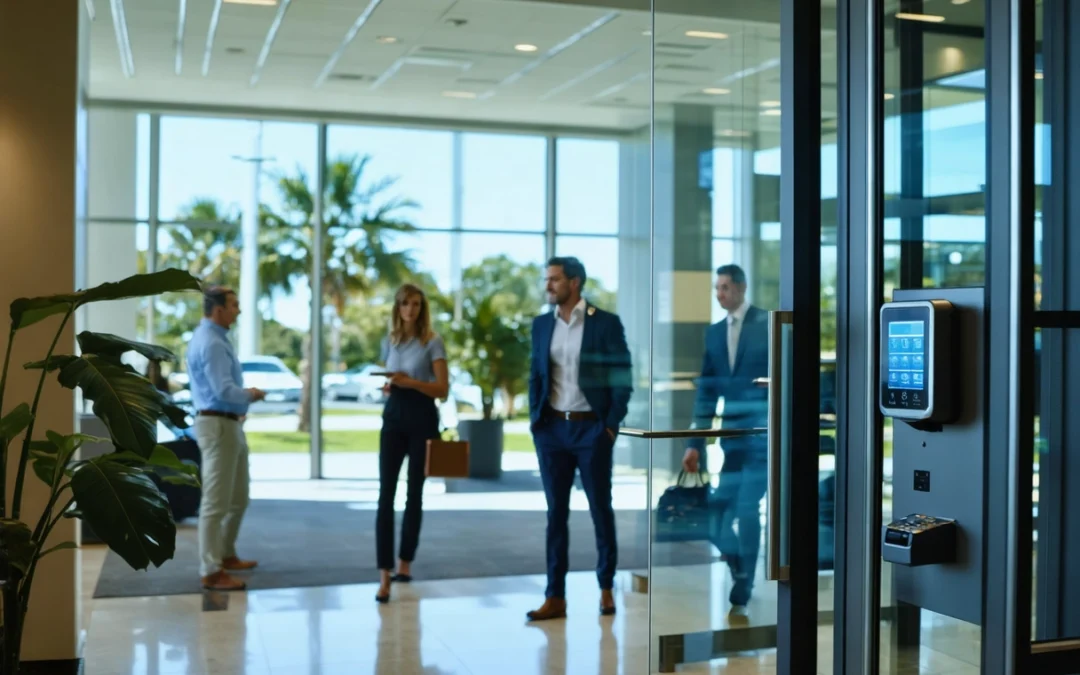Keyless Entry Systems: The Next Level of High Security for Your Englewood Business
In an age where security threats are evolving as rapidly as technology, traditional lock-and-key mechanisms are no longer sufficient for businesses aiming to protect their people, assets, and sensitive information. In Englewood, businesses are increasingly turning to advanced keyless entry systems to upgrade their security and streamline access management. These innovative solutions not only enhance security, but also offer unparalleled convenience and control. In this comprehensive guide, we will explore the transformative impact of keyless entry systems, how they work, their benefits, integration with other security technologies, and how your Englewood business can leverage them to stay ahead in the realm of high security and technology trends.
Introduction to Keyless Entry Systems
Keyless entry systems, also known as access control systems, eliminate the need for traditional keys by using electronic credentials such as key cards, fobs, PIN codes, biometrics, or mobile devices to grant or deny access. These systems are rapidly replacing conventional locks in commercial environments, bringing a new layer of sophistication and security to the workplace. Unlike mechanical locks that can be easily picked or compromised, keyless entry systems utilize encrypted digital signals and robust authentication methods to ensure only authorized individuals can enter restricted areas.
The rise of cyber-physical threats and the need for flexible, scalable access solutions have propelled keyless entry systems to the forefront of modern security strategies. As businesses in Englewood strive to safeguard their employees, clients, and property, understanding the nuances of these systems is essential to making informed decisions that align with both security needs and operational goals.
How Keyless Entry Systems Work
At the heart of every keyless entry system lies an electronic access control panel that manages the flow of individuals in and out of designated areas. This panel communicates with entry devices such as card readers, biometric scanners, or keypad interfaces. When a user presents their credential, the system verifies the information against its database and determines whether to unlock the door. This entire process is often completed in a matter of seconds, offering both security and efficiency.
Modern keyless entry systems can be networked and managed remotely, providing administrators with real-time visibility and control over who enters the premises and when. Access logs are automatically recorded, providing valuable audit trails for security reviews and compliance requirements. With advancements in cybersecurity frameworks, many of these systems are fortified against digital intrusions, ensuring that electronic credentials cannot be easily cloned or hacked.
Some of the most common types of keyless entry credentials include proximity cards, radio frequency identification (RFID) fobs, mobile app credentials, and biometric identifiers such as fingerprints or facial recognition. Each offers unique advantages and can be tailored to fit the specific needs of your business, whether you operate a small retail store or a sprawling corporate campus.
Benefits of Keyless Entry Systems for Englewood Businesses

The advantages of deploying keyless entry systems extend far beyond simply eliminating physical keys. For Englewood businesses, these systems represent a strategic investment in safety, efficiency, and future readiness. Below are some of the most compelling benefits:
Enhanced Security and Control
Traditional keys can be lost, stolen, or copied without your knowledge, creating serious security vulnerabilities. With keyless entry, access privileges are easily managed through a centralized system, allowing you to grant, revoke, or modify permissions instantly. If an employee leaves or loses a credential, their access can be terminated in seconds, mitigating the risk of unauthorized entry.
Many keyless entry systems also offer multi-factor authentication, requiring two or more credentials (such as a card and a PIN or biometric scan), which significantly raises the bar for intruders. These features are particularly valuable in high-risk industries, such as finance, healthcare, and technology.
Audit Trails and Compliance
Comprehensive access logs are a critical component of modern security. Keyless entry systems automatically record every entry and exit event, including user identity, time, and location. This data is invaluable for workplace safety compliance and for investigating incidents or disputes.
For industries subject to regulatory oversight, such as HIPAA for healthcare or PCI DSS for payment processing, keyless entry systems provide the documentation necessary to demonstrate that sensitive areas are protected and access is controlled according to best practices.
Operational Efficiency and Cost Savings
Managing physical keys is not only a security risk but also an administrative headache. The costs associated with rekeying locks, replacing lost keys, and manually tracking access privileges add up quickly. Keyless entry systems streamline these processes, reducing overhead and freeing up resources for other priorities.
Furthermore, these systems can be integrated with time and attendance tracking, visitor management, and building automation platforms, enabling seamless workflows and reducing the burden on your staff.

Scalability and Flexibility
As your business grows, so do your security needs. Keyless entry systems are designed to scale effortlessly, allowing you to add new doors, users, or locations without the need for extensive rewiring or hardware changes. This flexibility makes them an excellent choice for businesses of all sizes, from small startups to large enterprises with multiple sites across Englewood.
Types of Keyless Entry Systems
The market for keyless entry systems is diverse, with multiple technologies catering to different security requirements and budgets. Understanding the main types will help you choose the right solution for your Englewood business.
Card and Fob Systems
Proximity card and RFID fob systems are among the most popular forms of keyless entry. Users simply tap or wave their credential near a reader to gain access. These systems are cost-effective, easy to issue, and ideal for businesses with moderate security needs. Lost or stolen cards can be deactivated instantly, and new ones issued on the spot.
Biometric Access Control
Biometric systems use unique physical characteristics, such as fingerprints, facial features, or iris patterns, to authenticate users. These systems offer a high degree of security because credentials cannot be shared or duplicated. Advances in biometric security research have made these systems more accurate and user-friendly than ever before, with rapid enrollment and verification processes.
Keypad and PIN Systems

Keypad entry systems require users to enter a unique PIN code to unlock the door. While not as secure as biometrics, they are suitable for areas where convenience is a priority or as part of a multi-factor authentication system. PINs can be changed regularly to maintain security.
Mobile-Based Access
With the proliferation of smartphones, mobile access control is becoming increasingly popular. Users can unlock doors using secure mobile apps, often leveraging Bluetooth or NFC technology. This approach offers maximum convenience and can be integrated with mobile device management for added security. It also supports features like temporary guest passes, remote unlock, and push notifications for access events.
Integrating Keyless Entry with Advanced Security Systems
One of the key strengths of modern keyless entry systems is their ability to integrate with other security technologies, creating a comprehensive, layered defense for your business. By connecting access control with video surveillance, alarm systems, and building management platforms, you can automate responses to security events and gain a holistic view of your facility’s safety.
For example, when an unauthorized access attempt is detected, the system can trigger nearby security cameras to record the event and alert security personnel instantly. Integration with fire and life safety systems ensures that doors automatically unlock during emergencies, aiding in safe evacuation. These combined capabilities are at the core of integrated security strategies that keep businesses resilient against a wide range of threats.
Cloud-based access control platforms add another layer of flexibility, enabling remote management and automatic software updates. Administrators can monitor access activity, adjust permissions, and respond to incidents from anywhere, using a secure web portal or mobile app.
Key Considerations When Choosing a Keyless Entry System
Selecting the right keyless entry system for your Englewood business requires careful evaluation of various factors. Security is paramount, but you should also consider usability, scalability, cost, and compatibility with existing infrastructure.
Start by assessing your security needs. Identify which areas require the highest level of protection and who needs access to them. Consider the number of users, the desired authentication methods, and any regulatory requirements that may apply to your industry. Consult with a reputable security provider who can tailor a solution based on your unique needs.

Budget is another critical factor. While biometric and cloud-based systems offer the highest security, they may come with higher upfront costs. However, the long-term savings from reduced key management and enhanced operational efficiency often offset these expenses. Look for systems that are modular and scalable, so you can expand as your business grows without costly overhauls.
Finally, prioritize systems that offer robust cybersecurity protections. With the increasing convergence of physical and digital security, it’s essential to choose vendors that adhere to cyber-physical security standards and provide regular software updates to address emerging threats.
Real-World Applications: Case Studies from Englewood Businesses
Across Englewood, businesses in diverse sectors are already reaping the rewards of implementing keyless entry systems. Here are a few examples to illustrate the practical impact of these technologies:
- Corporate Offices: A financial services firm upgraded from mechanical locks to a biometric access system, dramatically reducing the risk of unauthorized entry and improving compliance with industry regulations. Employees now use fingerprint scanners to access sensitive areas, and visitor access is tightly controlled through temporary mobile credentials.
- Retail Stores: A local retail chain adopted a cloud-managed keyless entry solution, allowing the district manager to monitor multiple locations from a single dashboard. Lost or stolen credentials are deactivated instantly, and access logs help resolve internal disputes and theft investigations.
- Healthcare Facilities: To meet HIPAA requirements, a medical clinic implemented a multi-factor access control system combining card readers, PIN pads, and time-based restrictions. Only authorized personnel can enter medication storage and patient records areas, with all access events logged for audit purposes.
These real-world successes demonstrate that keyless entry systems are not just a theoretical improvement—they deliver tangible benefits in terms of security, efficiency, and compliance. By learning from the experiences of other businesses, you can make informed choices about how to implement these technologies in your own organization.
Overcoming Common Challenges in Keyless Entry Deployment
While the advantages of keyless entry systems are clear, businesses may encounter challenges during deployment. The most common issues include user adoption, integration with legacy systems, and ensuring ongoing maintenance.
User training is crucial to a smooth transition. Employees should be educated about new authentication procedures and best practices for credential management. Clear communication about the benefits and security improvements can help alleviate resistance to change.

Integrating keyless entry with existing infrastructure can pose technical challenges, especially in older buildings. Work with experienced installers who understand both modern access control technologies and the unique requirements of Englewood’s commercial architecture. Careful planning can minimize disruptions and ensure seamless operation.
Finally, ongoing maintenance is essential to keep your system secure and reliable. Regular software updates, hardware inspections, and periodic security reviews will help you stay ahead of emerging threats and maintain compliance with unified security best practices.
The Future of High Security: Trends in Keyless Entry Technology
The landscape of security technology is continually evolving, and keyless entry systems are no exception. Innovations such as artificial intelligence (AI), machine learning, and the Internet of Things (IoT) are shaping the future of access control. Predictive analytics can identify unusual access patterns and alert administrators to potential threats before they escalate. IoT-enabled sensors and devices offer real-time situational awareness and automated responses to security incidents.
Biometric technology is also advancing rapidly, with the emergence of contactless facial recognition and voice authentication. These methods offer both increased security and improved user experience, reducing the need for physical contact with surfaces—a significant benefit in a post-pandemic world.
Mobile credentials and cloud-based management will continue to gain traction, enabling businesses to manage access from anywhere and rapidly adapt to changing needs. As regulations and compliance standards evolve, keyless entry systems will play a central role in meeting new requirements for data protection and physical security.
Elevate Your Englewood Business with Keyless Entry Systems
In a world where security challenges grow more complex by the day, keyless entry systems offer Englewood businesses a reliable, scalable, and future-proof solution. By replacing outdated lock-and-key mechanisms with advanced electronic access control, you can protect your assets, streamline operations, and demonstrate a commitment to the safety of your employees and customers.
From enhanced security and compliance to operational efficiency and seamless integration with other technologies, the benefits of keyless entry systems are clear. As technology continues to advance, staying informed about the latest trends and best practices will ensure your business remains resilient in the face of evolving threats. Now is the perfect time to take your security to the next level and position your Englewood business as a leader in high security and technology innovation.
Need help with Keyless Entry Systems: The Next Level of High Security for Your Englewood Business?

